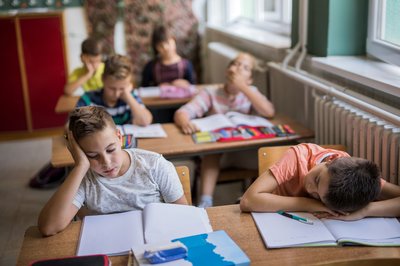By Brooke Ingemi, Amherst College
Technology continues to make our lives easier and more connected, but this convenience has come at a cost: Americans are living increasingly sedentary lives. Both children and adults spend far more time sitting than they should, and only a small fraction of Americans meet the recommended levels of daily physical activity.
This isn’t breaking news, though. We all know this, of course — we see it in our schools, workplaces and daily routines. But what many people do not realize is that the consequences of this inactivity are not just physical.
We all know exercise strengthens the heart and lungs, improves bone density and helps regulate blood pressure (U.S. Centers for Disease Control and Prevention). But what is often overlooked is that some of the most transformative benefits of physical activity happen in the brain.
[W]hat is often overlooked is that some of the most transformative benefits of physical activity happen in the brain.
Movement changes a person’s mood, sharpens focus, boosts memory and enhances academic performance (School Sport Foundation). Physical activity acts almost like a superpower, providing a range of benefits that almost no other activity can deliver all at once.
During my work as a neuroscience research assistant at the Institute for Cognitive and Brain Health, I witnessed this effect firsthand. We measured participants’ aerobic fitness using VO₂ max tests and assessed their performance on cognitive tasks. The findings aligned with years of research: physical activity does more than just accompany improved cognitive abilities — it actively supports and enhances them. Some studies even suggest that a single bout of exercise before a test can boost performance and help students achieve better scores (National Library of Medicine).

Ingemi undergoing a modified VO₂ max test, known as the Bruce Treadmill Protocol, as part of her research at the Institute for Cognitive and Brain Health. Image courtesy of the author
Recognizing the power of physical activity and its profound effects on both the brain and academic performance naturally raises a question: how can educators harness this tool in their classrooms?
It is not enough to rely on the occasional gym class or recess. In many schools, gym happens only a few times a week, or in some cases, just once a week. And even then, research shows that much of gym class is spent waiting in line, listening to instructions or doing activities that are not truly active (National Public Radio). Add that to the long hours spent sitting in classrooms, and it is clear that students need more opportunities to move.
Ideally, movement and physical activity would be built into the core curriculum alongside reading and math — not as an add-on, but as an essential tool for learning. However, until that day comes, educators must take the lead.
Ideally, movement and physical activity would be built into the core curriculum alongside reading and math — not as an add-on, but as an essential tool for learning.
To harness the power of physical activity as a learning tool, it is best to make it a part of your daily classroom rhythm. Here are some fun and simple ways to consistently incorporate physical activity into your classroom routines:
- Stretching or yoga poses during the first five minutes of settling in after morning announcements
- Quick rounds of jumping jacks or high knees before transitioning to a new lesson
- Balance exercises or movement challenges after silent reading
- A short, fun movement game, such as “Simon Says,” after a long independent work session
For even more inspiration, here is a list of 21 classroom-friendly movement activities. Each activity is designed to be inclusive for varying fitness levels, so all students feel safe and comfortable participating. Best of all, these activities are fun, helping students to see physical activity not as a chore, but as an enjoyable and rewarding part of their day.
The demands of meeting curriculum goals are real, and it can be difficult to find time for physical activity without feeling like it might take away from precious learning time. But physical activity is not a distraction — it is a tool that supports every aspect of education. By incorporating consistent movement into the classroom, you do more than prime students to be at their cognitive best; you also teach them to value exercise as a lifelong skill for both physical and mental well-being.
By incorporating consistent movement into the classroom, you do more than prime students to be at their cognitive best; you also teach them to value exercise as a lifelong skill for both physical and mental well-being.
Every minute of movement in the classroom is a powerful investment. Incorporated classroom physical activity is the simple, missing link to unlocking sharper minds and happier students.
About the author
Brooke Ingemi is a senior at Amherst College, majoring in neuroscience and philosophy. She contributes to several campus publications at Amherst, including The Amherst Student (News & Features sections) and The Amherst STEM Network. She also serves as a writer for the Amherst College Athletics Communications Office, where she produces athletic event coverage and post-game reports. Beyond her academic and writing pursuits, she is a member of the varsity women’s soccer and basketball teams. She is also a mentor for the Neural Network Club, a program that pairs new neuroscience students with older, more experienced student mentors.
If you are a middle or high school student and would like to pitch a Student Voice article or video to News Hour Classroom, contact vpasquantonio@newshour.org.
Sign up to receive our weekly newsletter with Daily News Lessons and community events.
To provide feedback on News Hour Classroom's resources, including this resource, click here.


